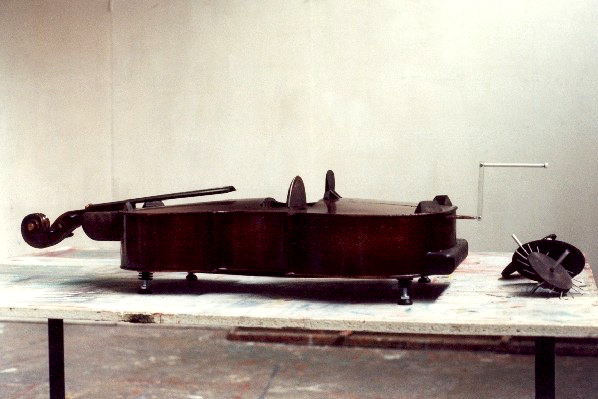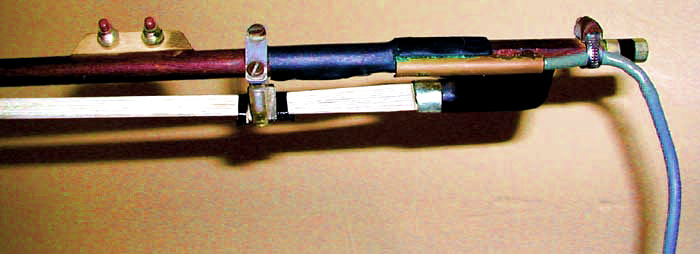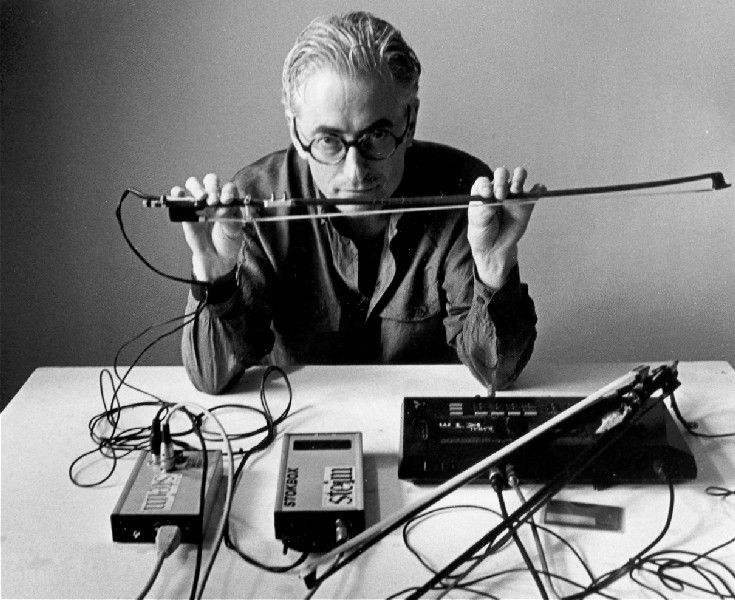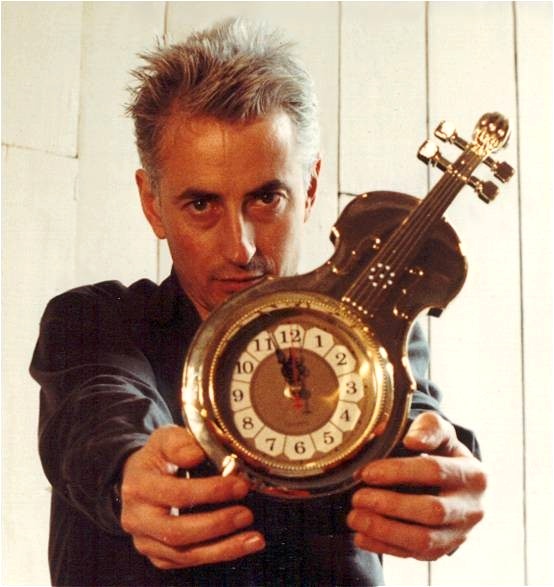The Hyperstring Project
interactive violin MIDI bow
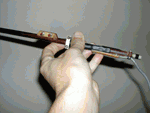 Hyperstring bow action 1992
Hyperstring bow action 1992
Research for a bow powered interactive MIDI system started in 1985 at Steim, Amsterdam. The first prototype bow was in use by 1987. Since then there have been three upgrades and modifications in design; the latest MIDI bow was built by Jorgen Brinkman and powers 2 pressure sensors and 2 accelerometers complete with programme switches. The most recent development in interactive bow history is the killer K-Bow.
1. Hyperstring represents a major step in the advancement of live interactive electronics combined with either high velocity violin playing, the use of amplified bows, or the cranking of the Whipolin (also fitted with a signal to MIDI controller, originating from the voltage of a magnet).
2. Hyperstring pushes the envelope of musical expression through the use of Midi controllers measuring the physicality of high speed improvisation.
3. Hyperstring uses three primary controllers... sensors mounted on the violin bow which measure the bow pressure; accelerometers mounted on the bow or bowing arm, measuring bowing arm movement (and more importantly) speed of movement; and footpedals which are played independently by both feet... not to mention the use of analogue feed back effects (sound generated in space)
4. Hyperstring creates independent (yet physically and musically related) improvised rogue counterpoint in two, three and four parts... in real time. The continuous control of any contrapuntal lines however, still rests with the business of playing the violin, basically a monophonic instrument.
5. Hyperstring follows a long tradition of polyphonic improvisation in the musics of the world. Particularly inspirational to this project are the 'one man band' novelties of the late 19th century street music culture and music hall; the Balinese Gamelan; the group improvisation of early trad jazz; and the essential contrapuntal skills of Palestrina, Bach, Schoenberg, etc.
6. Hyperstring does not follow the usual paradigm of drone and clone electronic music which is to expand (padding out the same sound), extend (the ubiquitous loop), or intensify (effects such as digital delay) what in essence are usually one line ideas. Hyperstring creates a volatile musical environment where the inherent subconscious intelligence of physical actions determine contrapuntal sonic events. The counterpoint of the violinist's body, arms, feet and finger movements are fundamental to the language and expression of the music.
7. Hyperstring brings together some 30 years of experimentation with legitimate, historical, modern, and homemade string instruments... also known as The Relative Violin Project. These exist in any performance as real instruments (e.g. the tenor violin), modified instruments (e.g. the disemboweled cello, now known as ~The Whipolin), virtual instruments (i.e. samples from a whole range of bowed, plucked, scraped, blown, string instruments), and generated wave forms and acoustic phenomena based on strings.
8. There are 3 Albums that illustrate the range of this project, Hyperstring, and China Copy, and Fleisch.
© Jon Rose 1996
Videos of concerts featuring the MIDI bow from the 1990s can be found here, and here.
Listen to a 2002 Bow Solo, using the MIDI bow, an amplified single strung violin bow, and the STEIM LISA program.
Bow solo 2002
Listen to a violin solo with MIDI bow mark2 from 1993 using the Steim Sensor Lab interface: The China Copy CD.
MIDI bow mark2














